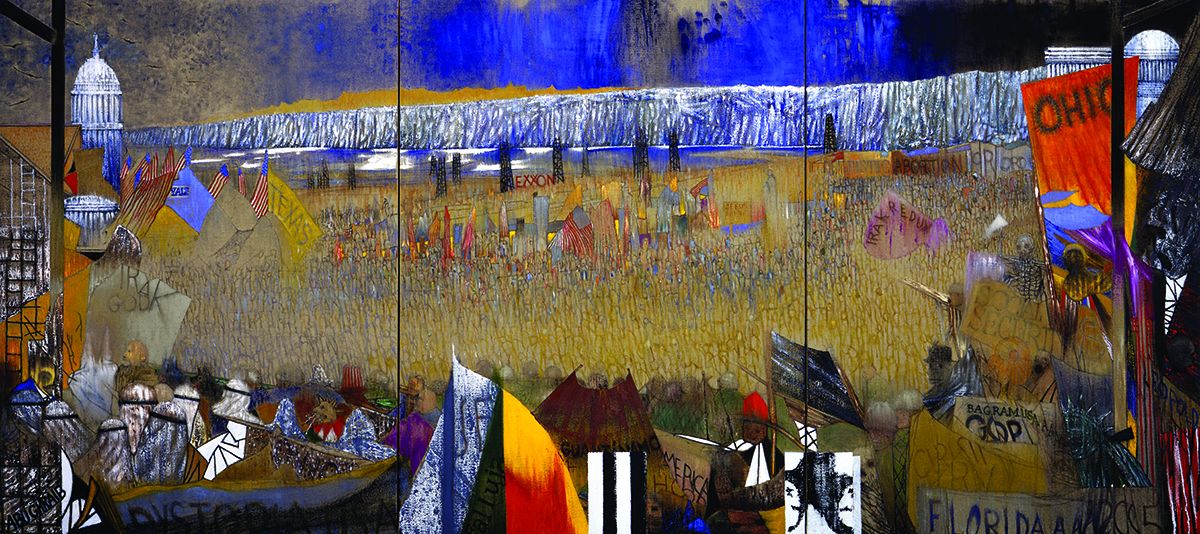Irving Petlin: Este Mundo
April 15 – May 26, 2006
Kent Gallery is pleased to present Irving Petlin’s most recent works on linen and on paper in collaboration with Galerie Jan Krugier, Ditesheim & Cie, Geneva. With a long tradition of political activism, Petlin’s works of the past decade have dealt with a view of global politics of the United States with regard to the growing conflicts in the Middle East.
For over fifty years, Irving Petlin has established himself as a master of paint and pastel, evoking powerful images in the tradition of Odilon Redon, James Ensor and Francis Bacon. Petlin has continuously cultivated the power of art to reconcile ancient wisdoms, European literature of the 20th Century, with current political engagements.
Irving Petlin received scholarships to the Art Institute of Chicago, postgraduate work at Yale University and a subsequent Ryerson Fellowship that allowed him to establish residency in Paris from 1959 to 1963. In response to the United States involvement in Vietnam, Petlin moved to the West Coast in 1964, and organized the Artists’ Protest Movement while a visiting artist at UCLA. In collaboration with Mark DiSuvero in 1965, they created the Peace Tower located at Sunset and La Cienega generating enormous public attention. The Peace Tower has been reconstructed for the 2006 Whitney Biennial. Since 1966, Petlin has divided his time between studios in New York, Paris, and summers in Martha’s Vineyard.
With an exhibition history that begins as early as 1956, Petlin has shown with galleries in Chicago, San Francisco, Galerie du Dragon in Paris, Palais de Beaux Arts in Brussels, Turin, London, with Odyssia Gallery in New York, Marlborough Gallery in London and New York, Kent Gallery in New York, and presently with Galerie Jan Krugier, Ditesheim & Cie of Geneva. Presently, the Pennsylvania Academy of American Art is organizing a traveling Retrospective for 2007 under the guidance of Peter Selz. Also under preparation is the first comprehensive monograph on Petlin’s oeuvre with essays by three formidable critics, Hayden Herrera, Max Kozloff and Michael Palmer.

